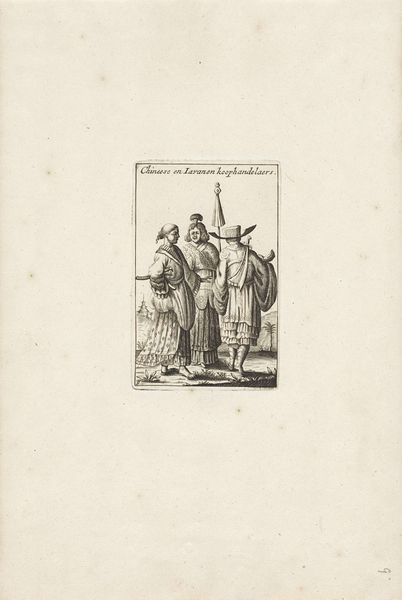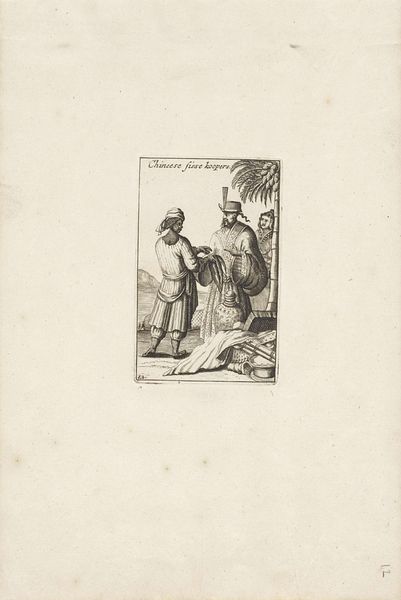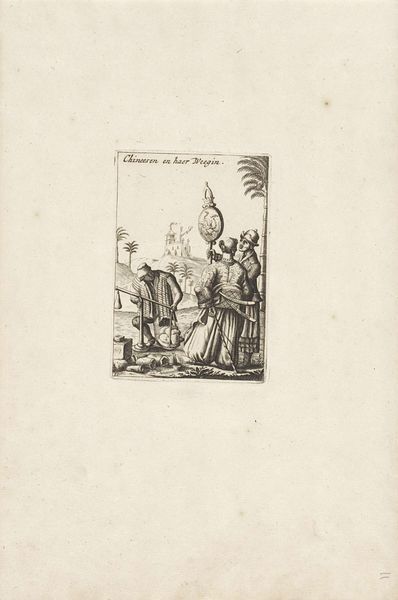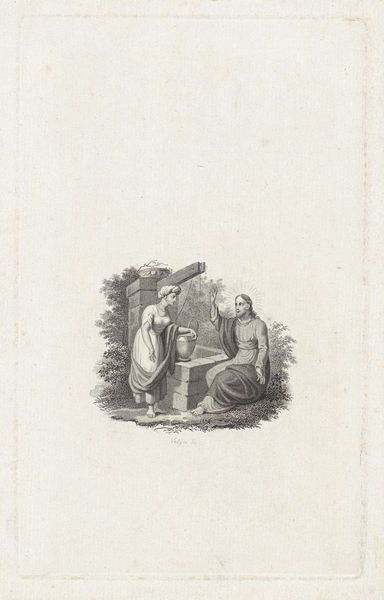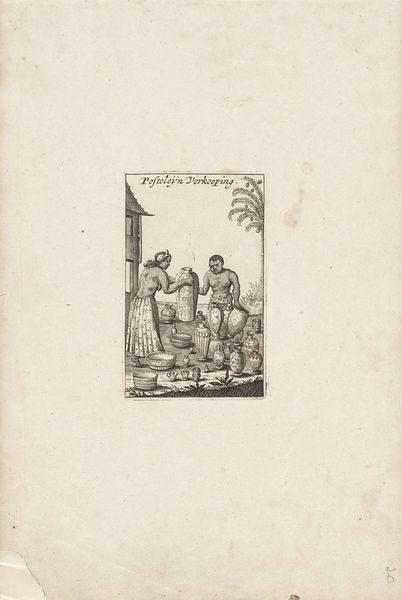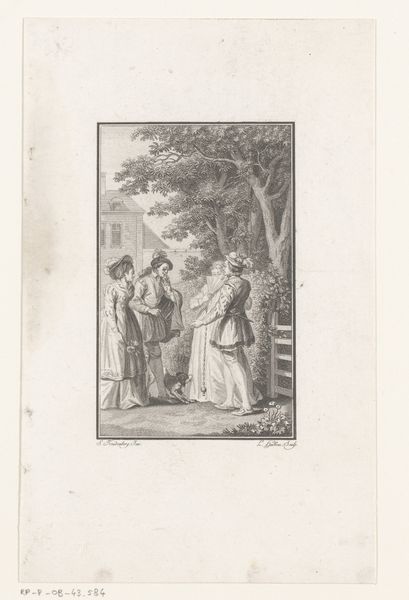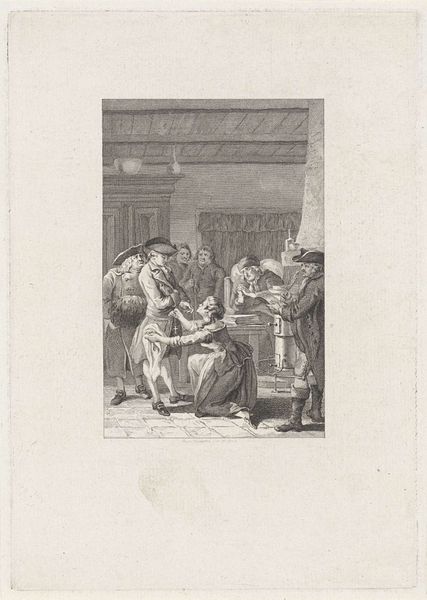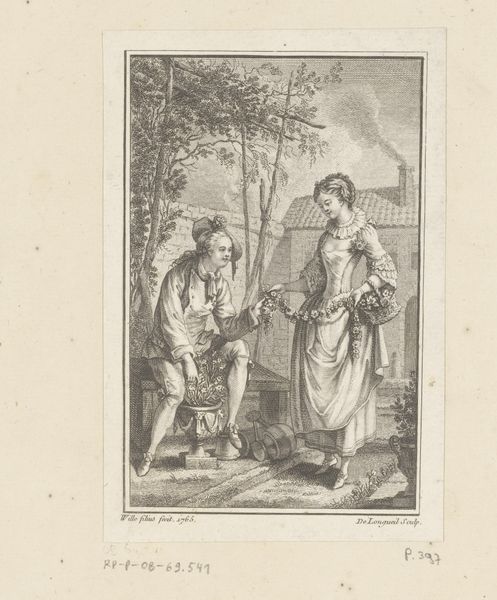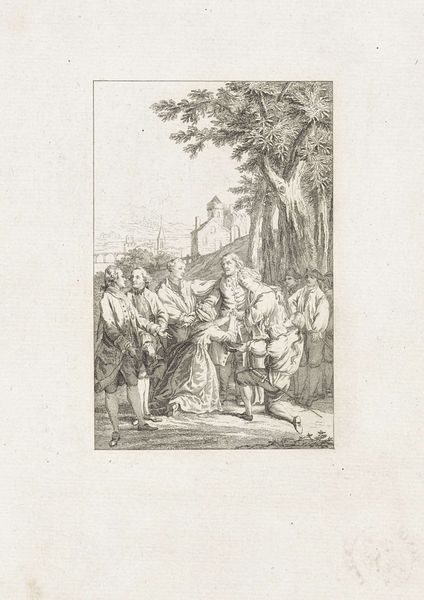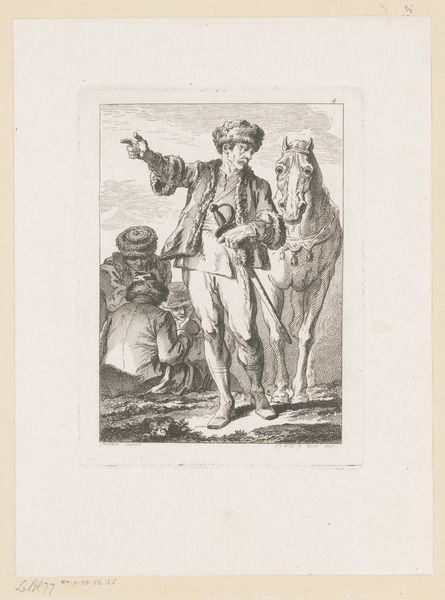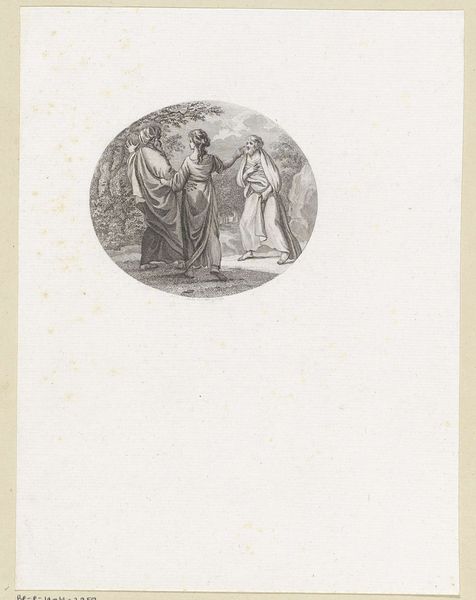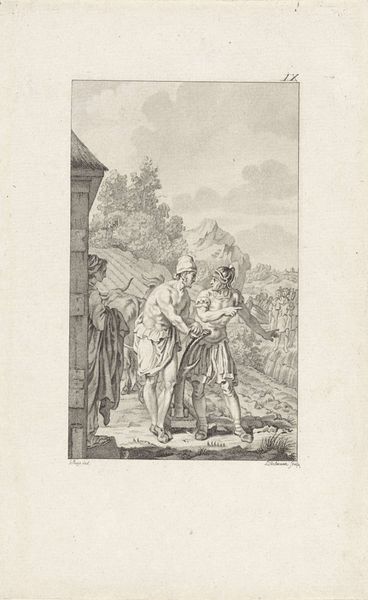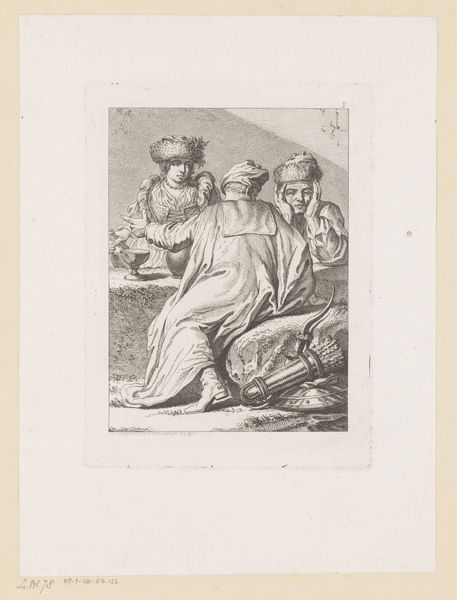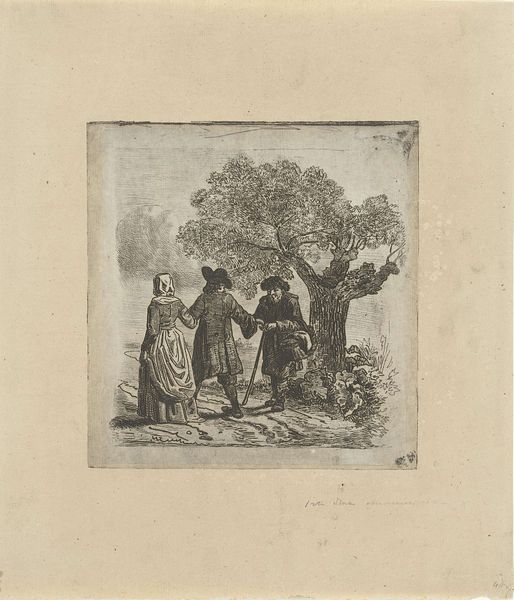
print, engraving
#
portrait
#
baroque
# print
#
old engraving style
#
figuration
#
line
#
genre-painting
#
engraving
Dimensions: height 103 mm, width 67 mm
Copyright: Rijks Museum: Open Domain
Curator: The first impression I get from this image, "Japanners," dated between 1682 and 1711, is one of carefully composed, almost staged formality. There's a stillness, a poised quality, despite the intimate interaction depicted between the two figures. Editor: Indeed. And it’s presented as a print, specifically an engraving by Pieter Schenk, currently held in the Rijksmuseum. Its cultural significance, however, goes beyond mere depiction; it signifies a historical moment of encounter and perhaps, a constructed idea of the 'other'. What do you read from these carefully rendered lines, symbols of an era's perception? Curator: Precisely. It’s a window into how Europeans viewed people from Japan, a land then shrouded in mystery. Note the fine details in their clothing: the patterned robes, the fan, the swords… these are loaded with symbolic weight. This wasn't just about recording what they saw, it's about framing and performing their idea about Japan and its people for a European audience. Editor: And performance being key, one must ask where does reality meet projection. This portrayal, in line and shadow, speaks volumes of power dynamics and exoticized imagery popular during the Baroque era. Do you see that city depicted at the background? Doesn't that hint towards more complex exchanges, of culture, economics and knowledge, hidden beneath these stiffly postured bodies? Curator: Absolutely. The background, a carefully rendered cityscape, hints at a thriving society. This is where it becomes less a snapshot and more of a construct. The print's lines reveal as much about European expectations of 'Japan' as it does about genuine cultural exchange. These stylized figures embody and broadcast prevailing socio-cultural narratives about a foreign and imagined Japan. Editor: Indeed. Pieter Schenk offers more than just representation, doesn't he? By crafting this image, it takes active role in forging identity and perceptions, echoing how social power shapes image and vice versa. It challenges viewers to ask critical questions not only about that depicted society, but our own assumptions in regarding this era. Curator: Exactly. “Japanners” makes me contemplate how art shapes—and sometimes distorts—our view of the past. Visual language always reveals cultural memory. Editor: For me, this single sheet unveils multiple social and historical layers, and invites reflection of both past projections and present interpretations of such encounters.
Comments
No comments
Be the first to comment and join the conversation on the ultimate creative platform.
